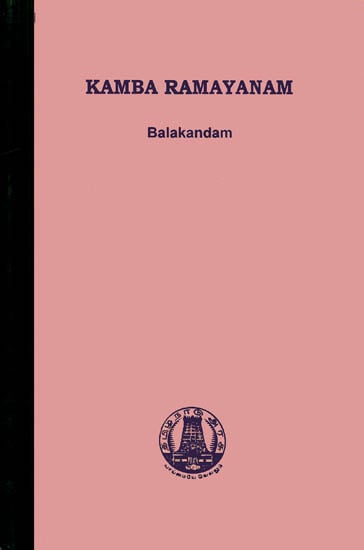
Ganesha is said to have written the poems that Kambar dictated to him during the night, as Kambar procrastinated the work till the day before the deadline set by the King. Legend has it that the entire episode was written in one night by Lord Ganesh. Kamba Ramayana is not a verbal translation of the Sanskrit epic by Valmiki, but a retelling of the story of Lord Rama. The Rama-avataram or Rama-kathai as it was originally called was accepted into the holy precincts in the presence of Vaishnava Acharya Naathamuni. The Ramavataram or Kamba Ramayanam of Kamban is an epic of about 11,000 stanzas. In Hinduism, Rama is the seventh incarnation of Lord Vishnu, one of the Trimurti (the Hindu holy trinity which includes Brahma and Shiva). It is an epic of 24,000 verses which depicts the journey of Rama, a prince of Ayodhya who belonged to Raghuvamsa (Solar dynasty). The original version of Ramayana was written by Valmiki. There is tomb in Nattarasankottai and every year a celebration called Kamban vizha is conducted at this place to felicitate Kambar. He was offered buttermilk in return and he became very happy and decided to stay there itself and spent his last days there. When he reached at Nattarasankottai, he was very thirsty and asked water in one house at Nattarasankottai. It is said that Kambar after having differences with Kulothunga's son, Rajaraja III, he left the Chola kingdom and moved from place to place. Kambar spent his last days in Nattarasankottai (known for Kannathal temple) near to Sivagangai town and his tomb is situated there. Raghava Iyengar wrote in detail about Kambar. In a scholarly biography, Kavichakravarty Kamban, Mahavidwan R. Kamban was a great scholar of both Tamil and Sanskrit-two of India's oldest and richest languages in terms of literary works. Kambar is generally dated after the vaishnavite philosopher, Ramanuja, as the poet refers to the latter in his work, the Sadagopar Andhadhi. Kambar flourished in Therazhundur, a village in the culturally rich Nagapattinam District in the modern state of Tamil Nadu in South India. Having heard of this talented bard, Kulothunga summoned him to his court and honoured him with the title Kavi Chakravarty ( The Emperor of Poets). He grew up the Chola Empire under the reign of Kulothunga III. His father was a wealthy farmer named Sadaiyepa Vallal. Becaue these pages are not available to read online, I would recommend you buy the book.Kambar was born in Therazhundur.

Kamba ramayanam speech full#
The full text of the Kamba-Ramayana (in two volumes) in English can be quickly summarized in the following table of contents. This is the first time that an English Translation of this great Tamil work is in front of the curious readers in two hardbound volumes. Dialogue between Kumbhakarna and Vibhisana.

Conversation between Laksmana and Tara.Ħ. The churning of the ocean and taking of Visnu in the form of Mohini.Ģ. The sage Kamban was well-versed in the southern recension of the Valmiki Ramayana, which would be evident from the following episodes which have been included by him in his work:ġ. The Kamba Ramayana comprises of six kandas instead of seven of the Valmiki Ramayana. Of these regional works, the Kamba Ramayaa which was composed by Mahari Kamban, possibly was the earliest. The regional Ramayanas were composed not only in the north but also in the south, in Tamil, Telugu and Kannada languages.


The Ramayana deserves to be called as the Adikavya because of the characteristics of the ornate poetry, such as the description of nature and the presence of the figures of speech, both of words and the sense are quite auspicious.Ī number of Ramayapas were composed in different parts of the country. The Ramayana which is known as the Adikavya or the first ornate poem according to the indigenous estimation is ascribed to the sage Valmiki, the Adikavi or the first author of the ornate poetry. The complete story of the Ramayapa was hardly popular with the masses in complete form till it was composed by the sage Valmiki in a book form. The story of Rama has been dominating the Indian religious scene from the time immemorial. Volume Two: Sundra-Kanda, Yuddha-Kanda (1st Half), Yuddha-Kanda (2nd Half). The English translation of Tamil Ramayana of Sage Kamban ( Kambar) in two volumes: Volume One: Bala Kanda, Ayodhya Kanda, Aranya Kanda, Kiskindha Kanda.
Kamba ramayanam speech free#
Also known as the Ramavataram, the Kamba Ramayana (Ramayanam) narrates the story of king Rama of Ayodhya in roughly 12,000 verses.īuy now with free shipping! Introduction: Summary: The Kamba Ramayana is the Tamil version of the famous Sanskrit epic, written by Kambar (Kamban) around the 12th century.


 0 kommentar(er)
0 kommentar(er)
